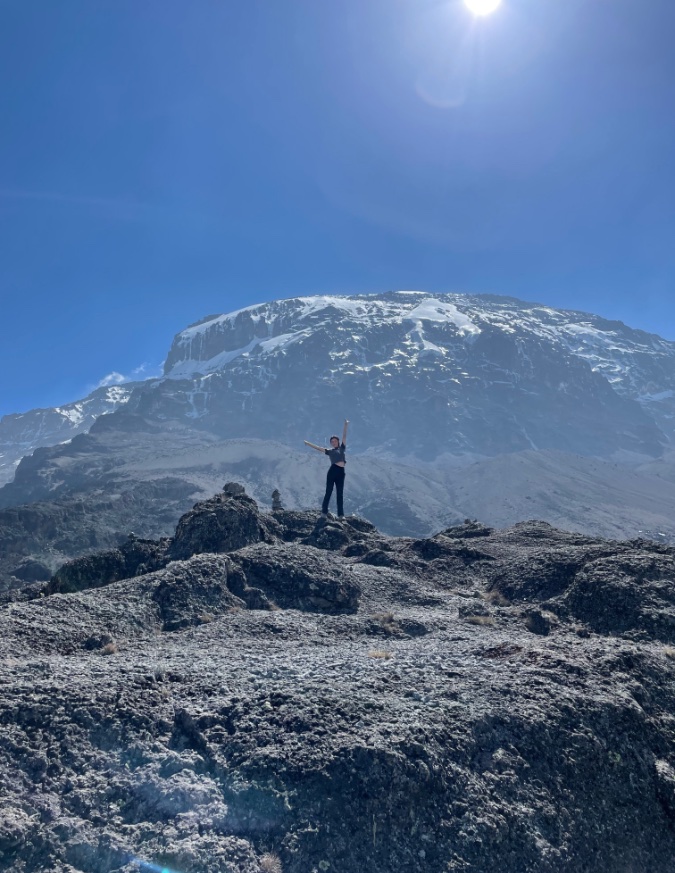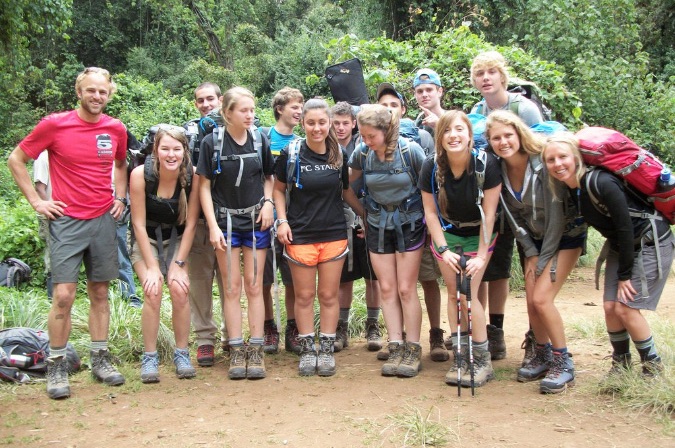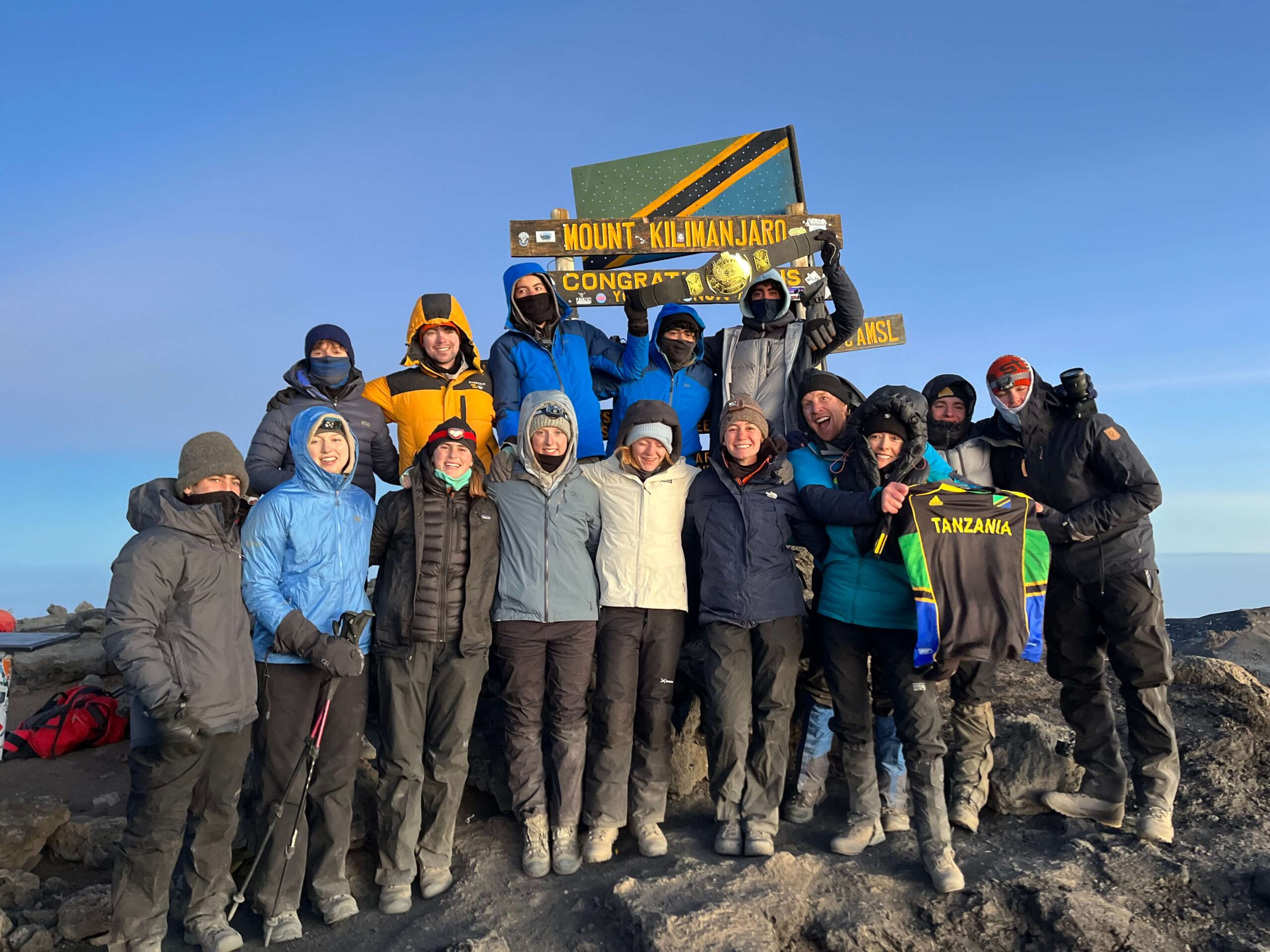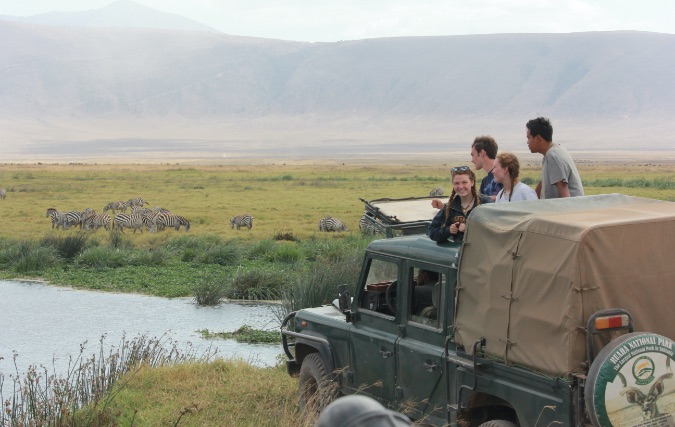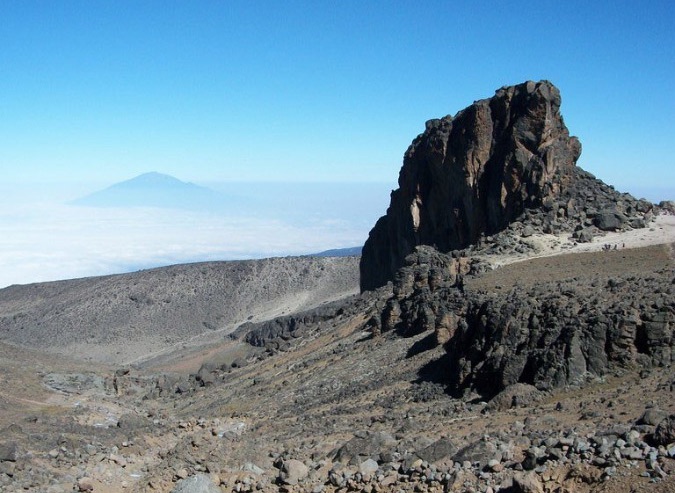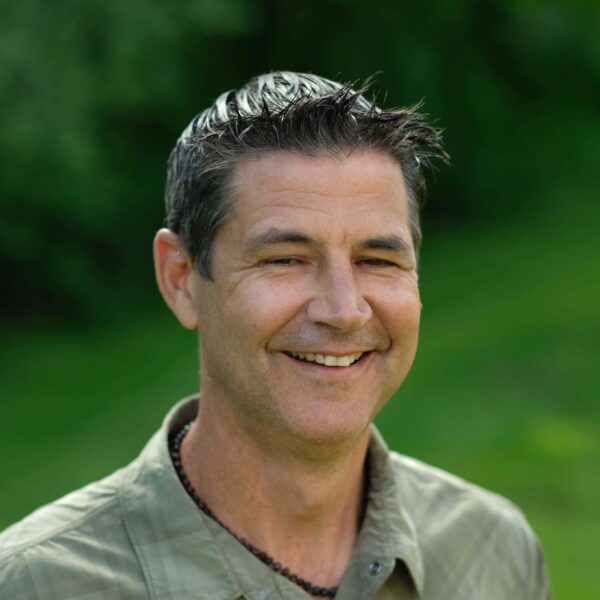Kilimanjaro
Mountaineering, Ecology, & Safari
Travel to Tanzania this summer and trek to the “Roof of Africa.” This Mt. Kilimanjaro program combines Putney’s most challenging outdoor adventure—climbing Africa’s highest peak—with a safari in two of the world’s most renowned wildlife parks: Ngorongoro Crater and Tarangire National Park. Our alpine adventure and safari explores the intersection of culture, ecology, climate, and local livelihoods in Tanzania. Learn about climate change, mountain ecology, porter and guide culture, wildlife conservation, and the past, present, and future of safari travel and trekking in East Africa.
- Highlights
• Watch the sunrise from Kilimanjaro’s snowcapped summit
• Trek across the stunning moorland of the Shira Plateau
• Go on safari in the ten-mile-wide Ngorongoro Crater big game park
Itinerary
This itinerary represents our best projection of the group’s schedule. However, we may implement changes designed to improve the quality of the program.
Meet your fellow high school student travelers and one or more of your leaders in New York, and fly together to Arusha, Tanzania. To learn more about how we organize travel, click here.
Begin your trip at our mountain lodge at the foot of Mt. Kilimanjaro. Get to know your group and leaders, learn basic Swahili vocabulary, have a pre-climb orientation with your mountain guides, and go on a short practice hike. Learn about the people, cultures, and history of the Kilimanjaro region on a visit to a local coffee farm. Most local residents are Chagga, the ethnic group that calls Kilimanjaro’s southern slopes its ancestral home and produces many guides, porters, and other trekking staff. Explore the challenges that climate change presents for communities that rely on Mt. Kilimanjaro’s resources to sustain their livelihoods. See firsthand how local people depend on a healthy watershed to grow crops, and also the challenges they face today as weather is increasingly unpredictable. Learn from senior guides what skills and training you need to work on the mountain and why young Tanzanians are drawn to careers in the trekking and safari industries. Through discussions with your guides, leaders, and fellow students, document the development of climbing in East Africa and the important role it plays in Tanzania’s economy.
Set out on the magnificent, unspoiled Lemosho and Southern Circuit route, and follow in the footsteps of the first Putney group to climb Kilimanjaro in 1972. This route is completed over eight days and allows ample time for healthy acclimatization, as well as a high summit success rate (more commonly used routes attempt the summit in just five or six days, requiring extreme elevation gains, and inadequate time to acclimate).
Travel through multiple climate zones as you ascend the mountain. At the entrance to Kilimanjaro National Park, pass plantations full of bananas and coffee. These agricultural lands give way to thick forest inhabited by Colobus monkeys, tropical birds, bush babies, and other wildlife. In this forest, spend your first night at Mti Mkubwa Camp. Make your way through higher elevation montane forest and clusters of ornamental hagenia trees before arriving at the Shira Plateau. This UNESCO World Heritage Site is a stunning expanse of ancient lava flows covered in heath, moorland, and alien-like giant groundsels. We overnight on the plateau’s West Side Camp, then at Moir Camp on its eastern side.
Moorland gradually transitions into alpine desert, a breathtaking environment dotted with moss and grass. It is home to the Lava Tower, an impressive 300-foot high volcanic plug jutting out from the mountainside that you visit on an acclimatization hike. From here we complete the Southern Circuit, trekking around Kilimanjaro’s south-facing glaciers, passing volcanic rock formations, and spending nights at Great Barranco, Karanga Valley, and Kosovo Camps.
Finally, we enter the arctic zone and make our summit attempt of Kilimanjaro’s 19,340-foot Uhuru Peak at sunrise. Take in bird’s eye views of the surrounding icefields, the savannah thousands of feet below, and the shadow of Mt. Meru in the distance (Africa’s fifth highest peak). Celebrate your hard-earned summit and snap a group photo to document your accomplishment. Descend and spend a final night at Mweka Camp on the edge of the forest zone, then a short hike out to the park’s Mweka gate the next morning where we say farewell to our guides.
Drive to the nearby town of Arusha for a celebratory group dinner at our lodge on the lower slopes of Mt. Meru, an impressive stratovolcano that towers over the surrounding countryside. Take a full day to rest and relax after your climb, explore a local market, and prepare for our safari adventure.
Set out on a safari organized by close friends of Putney, who introduce you to two of Tanzania’s most famous wildlife parks. In Tarangire National Park, from the safety of our safari vehicles, search for lions on the banks of the Tarangire River and spot elephants wading in Silale Swamp. Then ascend the Rift Valley Escarpment and continue to Ngorongoro Crater for more wildlife viewing in this ten-mile-wide caldera, home to cheetahs, rhinos, and other rare megafauna. Drive through grassland, swamps, along lakes and rivers, and encounter lions, zebras, elephants, monkeys, flamingos, wildebeest, jackals, bat-eared foxes, hyenas, and birds of prey. Outside of Ngorongoro, visit a traditional Maasai home, or boma, and learn how livestock herding is central to this pastoralist community’s way of life. Join in campfire discussions with our professional safari guides about the history of wildlife conservation in Tanzania and successful projects underway to mitigate human-wildlife conflict in communities surrounding national parks.
Fly from Arusha, Tanzania, to New York with your group and a leader, then continue on to your final destination. To learn more about how we organize travel, click here.
Itinerary
This itinerary represents our best projection of the group’s schedule. However, we may implement changes designed to improve the quality of the program.
Meet your fellow high school student travelers and one or more of your leaders in New York, and fly together to Arusha, Tanzania. To learn more about how we organize travel, click here.
Begin your trip at our mountain lodge at the foot of Mt. Kilimanjaro. Get to know your group and leaders, learn basic Swahili vocabulary, have a pre-climb orientation with your mountain guides, and go on a short practice hike. Learn about the people, cultures, and history of the Kilimanjaro region on a visit to a local coffee farm. Most local residents are Chagga, the ethnic group that calls Kilimanjaro’s southern slopes its ancestral home and produces many guides, porters, and other trekking staff. Explore the challenges that climate change presents for communities that rely on Mt. Kilimanjaro’s resources to sustain their livelihoods. See firsthand how local people depend on a healthy watershed to grow crops, and also the challenges they face today as weather is increasingly unpredictable. Learn from senior guides what skills and training you need to work on the mountain and why young Tanzanians are drawn to careers in the trekking and safari industries. Through discussions with your guides, leaders, and fellow students, document the development of climbing in East Africa and the important role it plays in Tanzania’s economy.
Set out on the magnificent, unspoiled Lemosho and Southern Circuit route, and follow in the footsteps of the first Putney group to climb Kilimanjaro in 1972. This route is completed over eight days and allows ample time for healthy acclimatization, as well as a high summit success rate (more commonly used routes attempt the summit in just five or six days, requiring extreme elevation gains, and inadequate time to acclimate).
Travel through multiple climate zones as you ascend the mountain. At the entrance to Kilimanjaro National Park, pass plantations full of bananas and coffee. These agricultural lands give way to thick forest inhabited by Colobus monkeys, tropical birds, bush babies, and other wildlife. In this forest, spend your first night at Mti Mkubwa Camp. Make your way through higher elevation montane forest and clusters of ornamental hagenia trees before arriving at the Shira Plateau. This UNESCO World Heritage Site is a stunning expanse of ancient lava flows covered in heath, moorland, and alien-like giant groundsels. We overnight on the plateau’s West Side Camp, then at Moir Camp on its eastern side.
Moorland gradually transitions into alpine desert, a breathtaking environment dotted with moss and grass. It is home to the Lava Tower, an impressive 300-foot high volcanic plug jutting out from the mountainside that you visit on an acclimatization hike. From here we complete the Southern Circuit, trekking around Kilimanjaro’s south-facing glaciers, passing volcanic rock formations, and spending nights at Great Barranco, Karanga Valley, and Kosovo Camps.
Finally, we enter the arctic zone and make our summit attempt of Kilimanjaro’s 19,340-foot Uhuru Peak at sunrise. Take in bird’s eye views of the surrounding icefields, the savannah thousands of feet below, and the shadow of Mt. Meru in the distance (Africa’s fifth highest peak). Celebrate your hard-earned summit and snap a group photo to document your accomplishment. Descend and spend a final night at Mweka Camp on the edge of the forest zone, then a short hike out to the park’s Mweka gate the next morning where we say farewell to our guides.
Drive to the nearby town of Arusha for a celebratory group dinner at our lodge on the lower slopes of Mt. Meru, an impressive stratovolcano that towers over the surrounding countryside. Take a full day to rest and relax after your climb, explore a local market, and prepare for our safari adventure.
Set out on a safari organized by close friends of Putney, who introduce you to two of Tanzania’s most famous wildlife parks. In Tarangire National Park, from the safety of our safari vehicles, search for lions on the banks of the Tarangire River and spot elephants wading in Silale Swamp. Then ascend the Rift Valley Escarpment and continue to Ngorongoro Crater for more wildlife viewing in this ten-mile-wide caldera, home to cheetahs, rhinos, and other rare megafauna. Drive through grassland, swamps, along lakes and rivers, and encounter lions, zebras, elephants, monkeys, flamingos, wildebeest, jackals, bat-eared foxes, hyenas, and birds of prey. Outside of Ngorongoro, visit a traditional Maasai home, or boma, and learn how livestock herding is central to this pastoralist community’s way of life. Join in campfire discussions with our professional safari guides about the history of wildlife conservation in Tanzania and successful projects underway to mitigate human-wildlife conflict in communities surrounding national parks.
Fly from Arusha, Tanzania, to New York with your group and a leader, then continue on to your final destination. To learn more about how we organize travel, click here.
Leaders
Meet some of our featured leaders. Please note that these may not be your leaders for the program.
Leaders
Meet some of our featured leaders. Please note that these may not be your leaders for the program.
Tanzania’s welcoming and vibrant culture and extraordinary natural beauty make it a favorite destination for travelers. A well-established democratic government and a widely respected public education system are the keys to Tanzania’s reputation as a safe and stable country. Representing over 120 different ethnic groups, Tanzanian citizens rely heavily on agriculture for both subsistence and livelihoods. The country boasts abundant wildlife and iconic landscapes, and Tanzanians pride themselves on their rich natural resources and peaceful history.
While each of the 120 ethnic groups in the nation has its own dialect, Swahili is the language spoken by the majority of Tanzanians. Higher education is conducted in English, and thus many older people speak English. Our mountain and safari guides are fluent in English.
Tanzania lies just south of the Equator, and weather conditions do not vary greatly throughout the year. We visit during the dry season. At the base of the mountain and on safari, temperatures reach 70–80°F (21–27°C) during the day, and drop to 40–50°F (4.5–10°C) at night. Temperatures vary widely higher on the mountain, with nighttime temperatures near the summit dropping to 0°F (-18°C).
Food in Tanzania is varied, and curries, grilled meat, tropical fruits, and vegetables are common. Influences from Indian and Western cuisines are reflected in the availability of breads like chapati and naan, and staples like pastas, cereals, and rice.
Tanzania’s welcoming and vibrant culture and extraordinary natural beauty make it a favorite destination for travelers. A well-established democratic government and a widely respected public education system are the keys to Tanzania’s reputation as a safe and stable country. Representing over 120 different ethnic groups, Tanzanian citizens rely heavily on agriculture for both subsistence and livelihoods. The country boasts abundant wildlife and iconic landscapes, and Tanzanians pride themselves on their rich natural resources and peaceful history.
While each of the 120 ethnic groups in the nation has its own dialect, Swahili is the language spoken by the majority of Tanzanians. Higher education is conducted in English, and thus many older people speak English. Our mountain and safari guides are fluent in English.
Tanzania lies just south of the Equator, and weather conditions do not vary greatly throughout the year. We visit during the dry season. At the base of the mountain and on safari, temperatures reach 70–80°F (21–27°C) during the day, and drop to 40–50°F (4.5–10°C) at night. Temperatures vary widely higher on the mountain, with nighttime temperatures near the summit dropping to 0°F (-18°C).
Food in Tanzania is varied, and curries, grilled meat, tropical fruits, and vegetables are common. Influences from Indian and Western cuisines are reflected in the availability of breads like chapati and naan, and staples like pastas, cereals, and rice.
What to Expect
Review specific program expectations here. For more general information:
To learn more about our Exploration programs click here.
To encourage full engagement and immersion in the Putney travel experience, we limit the use of cell phones and other devices on our High School programs. Students are allowed to use their phones in transit to the program, and keep their devices throughout. During in-country orientation, leaders will lock phones with a code, unlocking them for the second half of the program. During the tech-free portion of the program, students have the opportunity for a weekly call home according to a pre-arranged schedule. For more details, please see our FAQ.
This is Putney’s most physically challenging program. The ascent of Mt. Kilimanjaro involves eight days of hiking and camping, with considerable time spent at high elevations. While no technical climbing skills are required, participants must be physically fit. In the spring, Putney will provide training suggestions to help prepare you for a successful climb. You hike each day with your daypack, carrying only what you need for that day. All other gear is carried to the next camp by porter staff. You should come to the program with an open mind, eager to participate in outdoor experiences, and interested in exploring another culture and way of life.
This program spends extended time above an elevation of 10,000 feet/3,048 meters. Uhuru Peak, the summit of Mt. Kilimjanaro, sits at 19,340 feet/5,895 meters.
Pursue an independent project and explore a local topic of particular interest to you—compile a booklet of Swahili language greetings, document the training required to become a mountain guide, research the geological processes that created Mt. Kilimanjaro, study mountain weather, or explore local folklore or traditional music.
In Machame and Arusha, we stay in small mountain lodges. During the climb and on safari, we stay in tents provided by our local outfitters. Leaders reside together with the students throughout the program.
During our climb, breakfasts and dinners are prepared at camp by a trained cook. Lunches are eaten picnic-style on the trail. Meals are nutritious and rich in carbohydrates and proteins. Breakfasts consist of juices, granola, fruit, eggs, toast, pancakes, or french toast. Lunches have fresh bread, cold cuts, vegetables, and a variety of sandwich-making supplies. Dinners include hot soups, salads, pastas, rice, chicken, fish, and fresh fruits and vegetables. Coffee, tea, and filtered water are always available. In Machame and Arusha, we eat at our accommodations. While on the safari, we prepare meals in camp with our safari guides.
What to Expect
Review specific program expectations here. For more general information:
To learn more about our Exploration programs click here.
To encourage full engagement and immersion in the Putney travel experience, we limit the use of cell phones and other devices on our High School programs. Students are allowed to use their phones in transit to the program, and keep their devices throughout. During in-country orientation, leaders will lock phones with a code, unlocking them for the second half of the program. During the tech-free portion of the program, students have the opportunity for a weekly call home according to a pre-arranged schedule. For more details, please see our FAQ.
This is Putney’s most physically challenging program. The ascent of Mt. Kilimanjaro involves eight days of hiking and camping, with considerable time spent at high elevations. While no technical climbing skills are required, participants must be physically fit. In the spring, Putney will provide training suggestions to help prepare you for a successful climb. You hike each day with your daypack, carrying only what you need for that day. All other gear is carried to the next camp by porter staff. You should come to the program with an open mind, eager to participate in outdoor experiences, and interested in exploring another culture and way of life.
This program spends extended time above an elevation of 10,000 feet/3,048 meters. Uhuru Peak, the summit of Mt. Kilimjanaro, sits at 19,340 feet/5,895 meters.
Pursue an independent project and explore a local topic of particular interest to you—compile a booklet of Swahili language greetings, document the training required to become a mountain guide, research the geological processes that created Mt. Kilimanjaro, study mountain weather, or explore local folklore or traditional music.
In Machame and Arusha, we stay in small mountain lodges. During the climb and on safari, we stay in tents provided by our local outfitters. Leaders reside together with the students throughout the program.
During our climb, breakfasts and dinners are prepared at camp by a trained cook. Lunches are eaten picnic-style on the trail. Meals are nutritious and rich in carbohydrates and proteins. Breakfasts consist of juices, granola, fruit, eggs, toast, pancakes, or french toast. Lunches have fresh bread, cold cuts, vegetables, and a variety of sandwich-making supplies. Dinners include hot soups, salads, pastas, rice, chicken, fish, and fresh fruits and vegetables. Coffee, tea, and filtered water are always available. In Machame and Arusha, we eat at our accommodations. While on the safari, we prepare meals in camp with our safari guides.
A Day in the Life: Kilimanjaro Climb
- Morning
- Afternoon
- Evening
A Day in the Life:
Kilimanjaro Climb
- Morning
- Afternoon
- Evening

Program Directed by
If you have questions or would like to talk further about this program, please get in touch!





